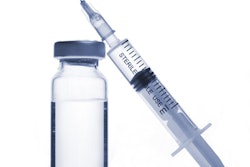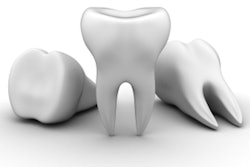
SAN FRANCISCO - Acidic erosion, gastroesophageal reflux disease (GERD), and increased use of medicines are often the causes of dental wear in addition to bruxism, according to a presentation by Warden Noble, DDS, at the California Dental Association's CDA Presents 2015 meeting on August 20.
"Demographic changes in our society will greatly change dentistry as more of the baby-boomer generation are living longer and keeping their teeth," Dr. Noble said. "This is going to create a huge need for a different kind of dentistry than we've done before."
Dental erosion is more often the result of acidic attacks on teeth than bruxism, which can be managed in a noninvasive way, he told a well-attended session on the issue. Dr. Noble is a professor of integrated reconstructive dental sciences at the University of the Pacific Arthur A. Dugoni School of Dentistry.
Impact of energy and sugary drinks
Many adolescents also are showing signs of dental erosion from drinking energy drinks and sugary beverages, according to Dr. Noble. Notably, more than 30% of adolescents now have some dental erosion and more severe wear, he said.
 Warden Noble, DDS, professor of integrated reconstructive dental sciences at the University of the Pacific Arthur A. Dugoni School of Dentistry.
Warden Noble, DDS, professor of integrated reconstructive dental sciences at the University of the Pacific Arthur A. Dugoni School of Dentistry.Dental erosion among young people is often caused by drinking sugary beverages, bulimia, and daytime bruxism from stress. Among older people, GERD, dry mouth from increased use of medicines, and sleep bruxism have more of an influence.
Sugary beverages, especially energy and sports drinks, drastically lower the mouth's pH levels, leaving teeth vulnerable to demineralization and caries, Dr. Noble noted. The normal pH level of saliva is 6.8%, and the longer there are low pH levels on teeth, the more vulnerable they become to demineralization and caries.
"Nothing happens on teeth until it happens in the saliva," Dr. Noble said. "Energy and sports drinks are much worse than soda."
The popular Monster line of energy drinks contains a whopping 13.5 teaspoons of sugar per can, and fruit drinks usually have 17.5 teaspoons of sugar, he noted. The U.S. has the world's highest consumption of soda. However, new California laws that forbid selling sodas in schools have helped, Dr. Noble said.
Older population
As people age, dental wear usually increases, while the incidence of caries decreases, Dr. Noble explained.
“Demographic changes in our society will greatly change dentistry as more of the baby-boomer generation are living longer and keeping their teeth.”
"There's some wear and tear, but most of it is related to behavior, and it's best to treat it earlier than later," he said.
"GERD is a main cause, as well as increased use of medicines," he explained. "Many patients with GERD have rapid dental erosion."
Gastric reflux from stomach acid contains hydrochloric acid and is very corrosive to teeth, said Dr. Noble, noting it's the same acid that's in car batteries.
Older people also have 30% to 50% less saliva, often as a result of the medications they're taking, he said. In addition, strenuous exercise decreases the amount of saliva, which helps keep healthy pH levels in the mouth. Vegetarians also have higher levels of tooth erosion, because they eat more fibrous foods, which accelerates dental erosion, Dr. Noble said.
However, there is less edentulism in the U.S. than ever, he noted, adding that the rate of edentulism in California residents is only about 4% to 5%.
What dentists can do
Dentists often see symptoms of destructive or problematic behavior before medical physicians because of the impact on teeth, Dr. Noble pointed out.
Dentists should counsel their patients about some of the causes of dental erosion, such as eating big, spicy meals before bedtime, which can cause GERD. In addition, they should caution patients about the oral and overall health impacts of smoking.
The abrasiveness of toothpaste also can have an impact, according to Dr. Noble. Toothpaste with stannous fluoride offers the best protection against erosion, because it coats teeth and protects exposed surfaces, he said. Instead of brushing immediately after eating, he advised waiting 30 minutes to allow oral pH levels to go back up.
"It's really hard to change behavior, but we should at least try," Dr. Noble said.



















